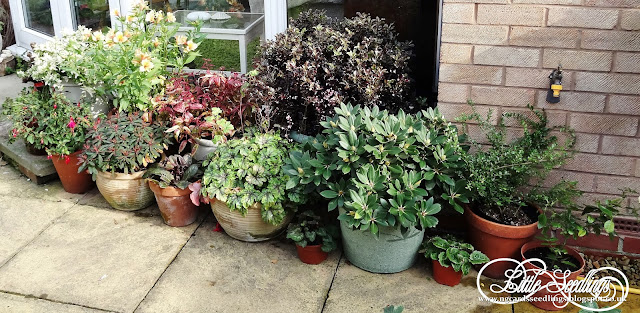Good Morning!
Even though it's the Festive season there are still little things you can be doing in the garden.
Oh and I know this post is a day late ... let's blame it on the festivities lol
Even though it's the Festive season there are still little things you can be doing in the garden.
Oh and I know this post is a day late ... let's blame it on the festivities lol
1. Planting - The ground is still warm due to the unseasonal weather so you still have chance to plant or relocate any shrubs, roses, trees and hedges. This is also a good chance to check any plants that are currently needing support if you are experiencing windy weather too!
2. Winter Pruning - If your looking for a few jobs to do this side of Christmas then giving your Acers, Birches and Vines a prune is a good thing to do! Pruning will allow you to to create shape and get rid of any dead bits.
3. Summer Flowering Bulbs - I know that Summer is the last thing on everyone's minds with Christmas in just a few days, but why not start deciding which Summer flowering bulbs
(such as Dahlia's and Gladioli) that you'd like next year whilst the widest choice is available.
(such as Dahlia's and Gladioli) that you'd like next year whilst the widest choice is available.
Also if you haven't done so already, order next years seeds!
The sowing season will soon be upon us!
The sowing season will soon be upon us!
Dahlia 'Cafe Au Lait' from my garden in 2014
4. Lawns - Keep off your lawns in frost and wet weather as walking over the grass can damage the grass and result in unsightly patches.
5. Greenhouse - With the extremely mild weather, Botrytis (Grey Mould) can be more of a problem undercover in GH's that have insulation as ventilation isn't as good as when your GH isn't insulated. Make sure you check your plants daily, I have been finding newly affected plant material each time I take a look and remove any of the diseased material straight away. When watering make sure you do it sparingly and try not to catch any of the plants foliage to limit infection.
6. Climbing Plants - Plants such as Ivy, Virginia Creeper and other climbers that are growing on houses can have a little trim if they are approaching windows and guttering. Also check that Climbers elsewhere in the garden are tied into their supports.
7. Autumn / Winter Bedding - Check over any bedding that you have for signs that it is past it's best. Most of my Viola's were looking tired and had caught Black Spot this week so it was time to transfer them to the compost bin! Replace any tired plants with fresh bedding or winter flowering shrubs ... a perfect excuse for a trip to the garden centre!
As mentioned in my last checklist Primroses can be instantly cheered up by removing fading / discoloured leaves and dead - heading.
8. Clean Up - Finally if you don't have any of these jobs above to do, keep up with clearing any fallen leaves on lawns and ponds to reduce the spread of disease and give any dirty pots and trays a good clean, it's not the most exciting job but when it comes to sowing seeds and potting on next year good plant hygiene is a must for successful growing!
Thanks for stopping by and I hope you all have a wonderful Christmas!
For as long as you keep reading I shall be back with the Checklist & Problem Area posts next year along with some more snaps of my Garden, Plants and other Gardening topics next year ...
For as long as you keep reading I shall be back with the Checklist & Problem Area posts next year along with some more snaps of my Garden, Plants and other Gardening topics next year ...
HAPPY GROWING!
XXX





















































